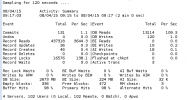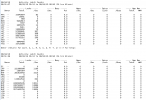KMoody
Member
Server Information
Version: SUSE Linux Enterprise Server 11 (i586)
Processor: Single
Max Speed: 30000 MHz
Database Information
Size: 2.2 GB
Current Spin: 10000
Average Number of Users: 100
Average Latch Timeout: 35/min
Given this information, could our performance improve if we adjusted -spin? (We can switch to a multiprocessor machine if it will help.)
Version: SUSE Linux Enterprise Server 11 (i586)
Processor: Single
Max Speed: 30000 MHz
Database Information
Size: 2.2 GB
Current Spin: 10000
Average Number of Users: 100
Average Latch Timeout: 35/min
Given this information, could our performance improve if we adjusted -spin? (We can switch to a multiprocessor machine if it will help.)


